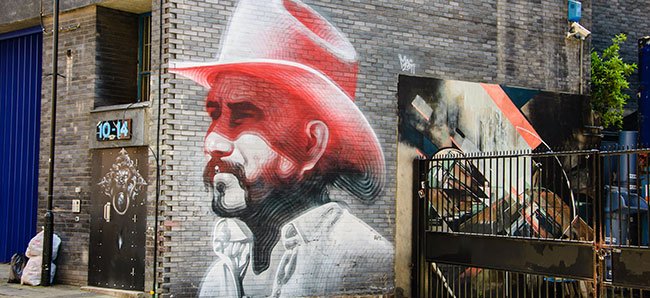As business attorneys, we frequently deal with copyright questions related to graphic arts and other commercial artwork. Usually this means putting agreements in place to make sure everyone owns the rights they need to own. These are well-settled areas of law that don’t often surprise me. But copyright law is full of surprises; sometimes it seems like there is an exception to every rule. Today I’d like to talk about an area of copyright law that does not frequently come up in business law: when might an artist have enforceable rights over artwork that has already been sold? First, I will discuss general copyright law and then explain how VARA can help artists protect their work.
Copyright Law and Moral Rights
In general in the United States, an author cannot control what a buyer does with a particular copyrighted work after the sale of that work. Under the “first sale doctrine,” an individual who purchases a copy of a copyrighted work from the copyright holder receives the right to sell, display or otherwise dispose of that particular copy, notwithstanding the interests of the copyright owner. Of course, the buyer is not allowed to sell copies of the work, but as to the individual copy that she purchased, she may do with it whatever she desires–the original author cannot control what she does after the work is sold. This is consistent with traditional notions of property rights: ownership of property implies control over that property. (It is also the reason most software is licensed rather than sold, but that is a topic for another day).
In 19th century Europe, a different philosophy emerged called “moral rights.” Definitions of moral rights vary, but all recognize certain rights in an artist’s work that are distinct from traditional property rights. These can include the right to have the artist’s name (and no other names) associated with artwork, the right to prevent mutilation or alteration, the right to control when and if the art will be revealed to the public, and the right to withdraw or alter the work once it is revealed. Perhaps because moral rights depart from traditional property rights, they have not been well received in the United States.
In 1989, however, the United States became a signatory to the Berne Convention, an international treaty governing copyright law. The Berne Convention requires signatories to meet certain minimum standards of copyright protection, including protecting certain moral rights. In an effort to comply with the treaty, the United States passed the Visual Artist Rights Act, or VARA, in 1990.
VARA
The VARA gives artists limited moral rights under federal law. VARA provides new rights to authors of “visual works of art.” Visual works of art generally including paintings, drawings, prints, or sculptures, existing in a single copy or in a limited edition of 200 or fewer consecutively numbered copies. They do not include most commercial art, nor do they include works for hire.
Authors of such works (we’ll call them “VARA Artists”) have the right to: (1) claim authorship of the work, and (2) prevent the use of their name as the author of works they did not create. VARA Authors also have the right to prevent the use of their name as author of their own works if those works have been distorted, mutilated, or modified in a way that would hurt their honor or reputation. Finally, VARA authors also have the ability to prevent the distortion, mutilation, or modification of works in a way that hurts the author’s reputation, and, for works of “recognized stature,” to prevent the work’s destruction. These rights belong to VARA Artists, not the copyright owners, and such rights may not be transferred. They exist only during the life of the author. If there are multiple authors, they are joint owners of such rights.
These VARA rights are powerful. Artists have successfully prevented others from destroying their works, or have obtained damages after their work has been destroyed, using VARA. However, as one court has noted, “Not every artist has rights under VARA, and not everything called ‘art’ is protected by such rights.” The rights are limited in important ways, and often whether a work is protected will depend on disputed facts or expert testimony. Adding to uncertainty is the lack of caselaw in this area, as there have been relatively few VARA cases.
Although we said in the beginning of this blog article, that VARA doesn’t come up frequently in a business setting, it is an issue for commercial property owners when dealing with public murals and statutes. Disturbingly, the more prominent the artist and therefore more desirable the artwork, the greater the potential for a successful VARA claim by that artist.
Copyright law is the law of art, and not just paintings or sculptures–it has been stretched to include things like software, writing, and more. And so, it is also critical to business. Chances are your business doesn’t need to worry about VARA. But it probably could benefit from some advice on protecting its copyrighted work and avoiding infringing the rights of other. If you need help protecting your copyrights or intellectual property, give us a call.
Law 4 Small Business can help you with your Intellectual Property needs!

